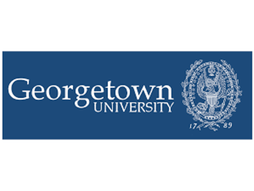Our Review of the University of Michigan's Thinkabit Lab Summer Camp for Middle School Students
If you’re a middle school student interested in STEM, participating in a STEM-related summer camp could significantly boost your profile going into high school for several reasons. First, STEM camps provide early exposure to science, technology, engineering, and mathematics, helping you develop foundational skills that will be incredibly valuable for advanced high school coursework.
In addition, attending STEM camps signals a strong interest in these fields, which can be useful when applying for high school enrichment programs. You will show that you’re not only interested in this field but also that you’re proactive enough to search for learning opportunities beyond the classroom. Finally, camps can help you explore different STEM fields, which can help you make informed decisions about high school courses, clubs, or advanced placement tests.
One such summer camp is the University of Michigan’s Thinkabit Lab Summer Camp. In this blog, we’ll learn more about this program, including its structure, costs, eligibility requirements, and the pros and cons of participating.
What is the Thinkabit Lab Summer Camp?
The University of Michigan’s Thinkabit Lab Summer Camp is an immersive program designed for middle school students to explore STEM through hands-on engineering projects. You will strengthen your scientific skills and understanding, meet professional engineers, and build your own projects, all while exploring the Michigan Engineering Zone in midtown Detroit.
How is the program structured?
The Thinkabit Camp is a one-week program. Although 2025 dates have not been released yet, they will likely be similar to the 2024 dates. In 2024, students in grades 6/7 attended camp from August 5 – 9, while students in grades 7/8 participated from August 12 – 16. Camp takes place at the Michigan Engineering Zone in midtown Detroit. Students attend camp from 9 a.m. to 3:30 p.m. every day.
What is the cost of the program?
The Thinkabit Camp is fully funded, so there is no cost to participate in the program!
Who is eligible for the program?
The Thinkabit camp is open to current 6th-8th graders, or incoming 7th-9th graders.
How do students apply?
The application deadline for the 2024 program was April 5. You can expect a similar deadline for the 2025 program and apply on the program’s website.
What will students learn?
Students will participate in hands-on projects related to science, technology, engineering, and math. For example, you might spend a session building robots, learning about the Internet of Things, or learning basic coding. The program focuses on hands-on learning, creative problem-solving, and exposure to careers in STEM, with the camp often including talks by engineers. The program aims to introduce you to STEM careers you may not have known existed. You will also have the chance to make friends through the fun activities planned each day.
Is it prestigious?
While a middle-school program won’t be important enough to put on a college resume, attending the Thinkabit program could help you when applying to a prestigious high school or an advanced STEM program. Although there is no official information regarding the acceptance rate, the fact that the program is fully-funded and associated with the University of Michigan indicates a relatively high level of competition and prestige. Spaces are limited, and the program maintains a waitlist, indicating more students apply than can participate.
Now that we know more about this camp, let’s look at the pros and cons of attending.
Pros
1. Hands-on STEM experience
At the Thinkabit Camp, you will gain practical, hands-on experience in STEM through engaging activities. This is a form of more intensive, interactive learning that most students rarely engage in when attending traditional school. Attending the Thinkabit Camp allows you to learn in a valuable, engaging way, helping to solidify foundational concepts before entering high school.
2. Exposure to STEM careers
By participating in the program, you will be introduced to various STEM career pathways in fields such as engineering, computer science, and biotechnology. This exposure at the middle school level can help clarify your academic goals and interests for high school and beyond. By identifying your interests within STEM, you will be better prepared to plan your high school trajectory around that subfield.
3. Enhances academic profile
Participation in a reputable STEM camp like the Thinkabit lab can boost your profile when applying to future selective STEM programs or competitive high schools. You can demonstrate your commitment to learning, interest in STEM, and experience in all types of learning environments, qualities that will serve you well in high school.
4. It’s free!
Students are given access to resources from the University of Michigan, including networks with professionals and educators, state-of-the-art facilities, and high-tech equipment, all for free! Typically, a program like this would cost a lot of money. To be given this opportunity for free would alleviate any financial burden on families.
Cons
1. Limited duration
The Thinkabit Camp is shorter in duration than most summer camps. It lasts less than a full week, which may not be sufficient for the type of in-depth exploration of STEM topics that some students might prefer. If you want more than just a basic introduction to STEM concepts, you might want to apply to programs with a longer duration.
2. Location constraints
The Thinkabit Camp is held in Detroit and aims to serve students in the city and Southeast Michigan. The camp may not be easily accessible to students who live far away, and the need to travel or live nearby could add logistical challenges and costs.
Our Review
The University of Michigan’s Thinkabit Lab Summer Camp is a great opportunity to interact with like-minded peers, engage in hands-on learning activities, and build your profile before high school. Whether or not you should apply depends on your interests and goals. If you are someone with a strong interest in STEM and questions about STEM careers, we think this could be a great option for you! If you’re looking for a longer, more intensive program that delves deeper into complex STEM topics, or if the camp’s logistical requirements are a barrier for you, you might want to consider other programs.
One other option — the Lumiere Research Scholar Program
If you’re interested in pursuing independent research, you could also consider applying to one of the Lumiere Research Scholar Programs, selective online high school programs for students founded with researchers at Harvard and Oxford. Last year, we had over 4000 students apply for 500 spots in the program! You can find the application form here.
Also check out the Lumiere Research Inclusion Foundation, a non-profit research program for talented, low-income students. Last year, we had 150 students on full need-based financial aid!
Amelia is a current senior at Harvard College studying art history with a minor in economics. She’s enthusiastic about music, movies, and writing, and is excited to help students as much as she can!










